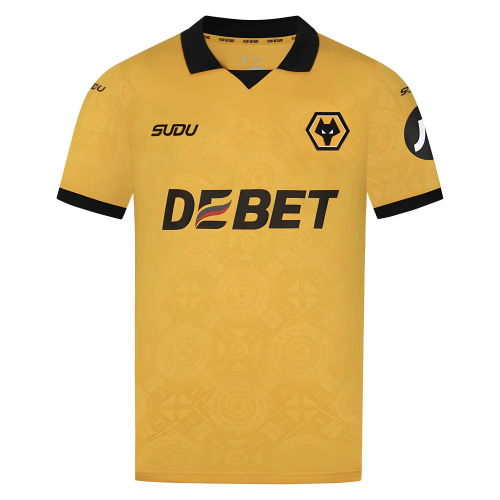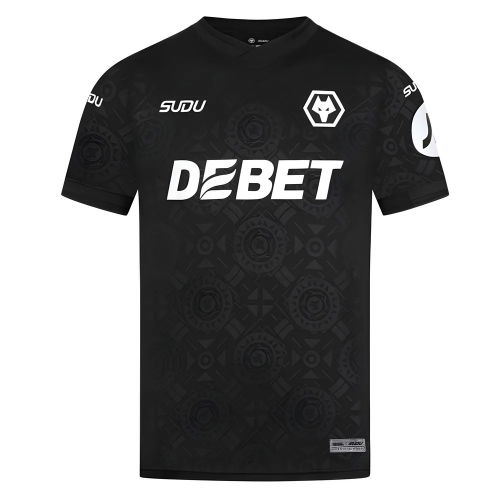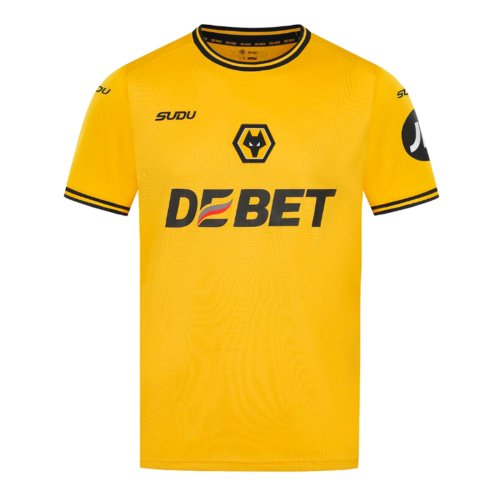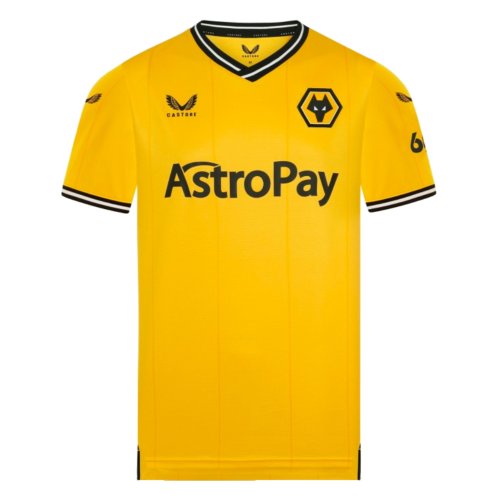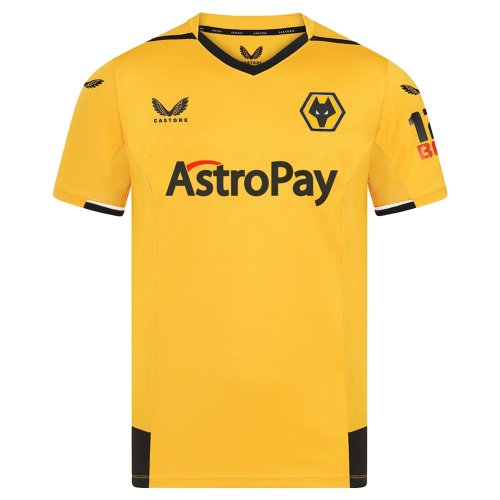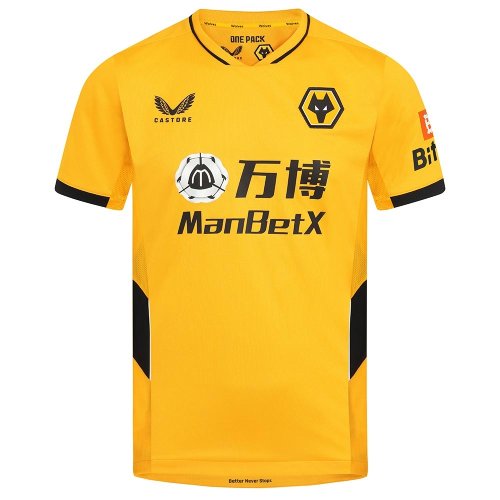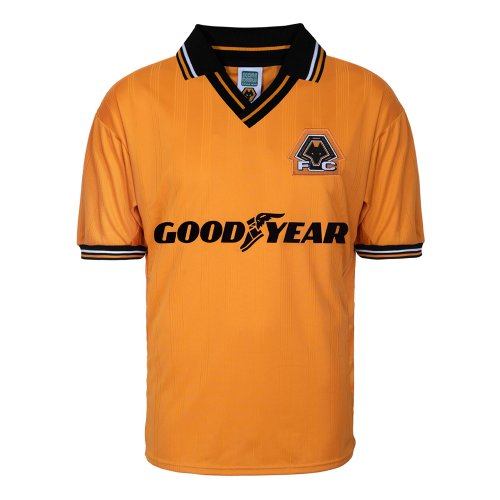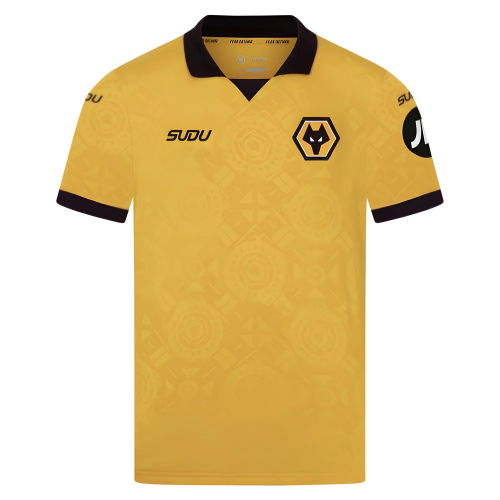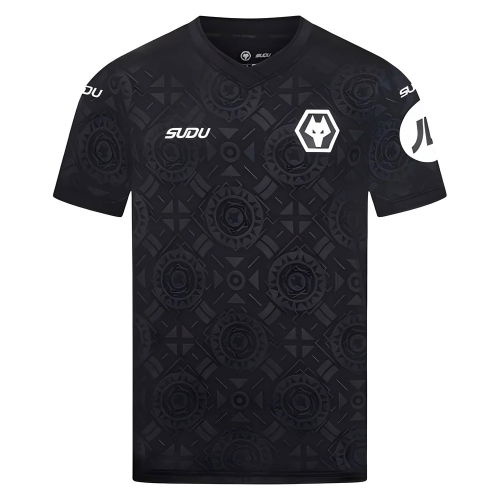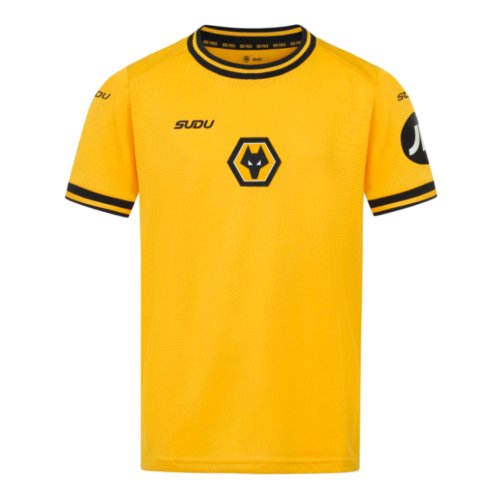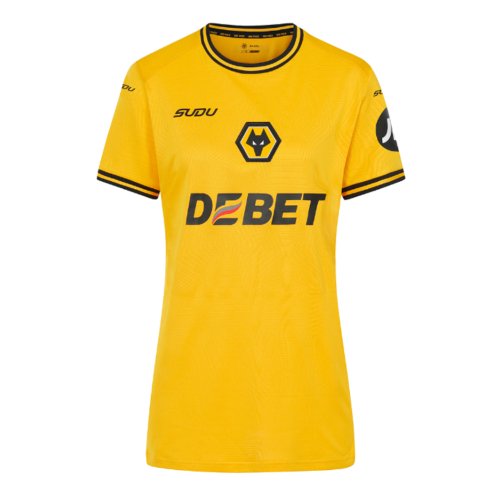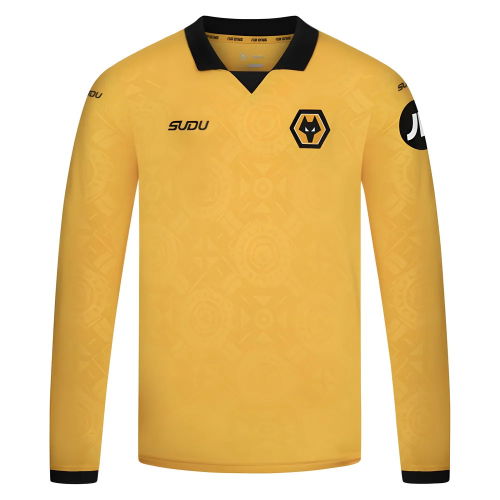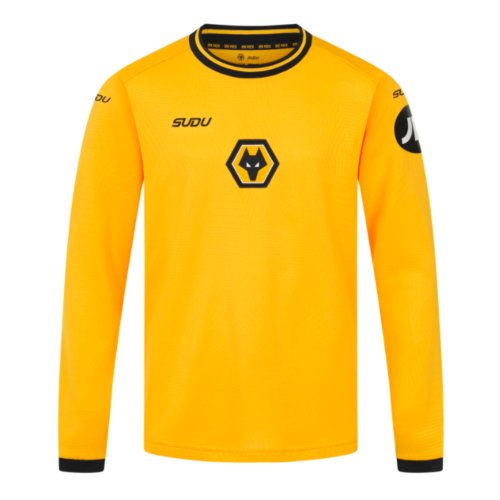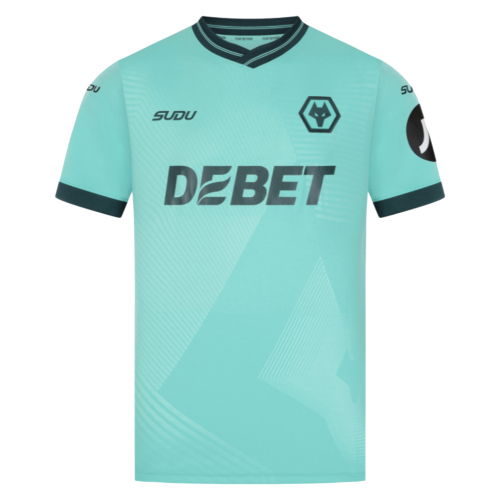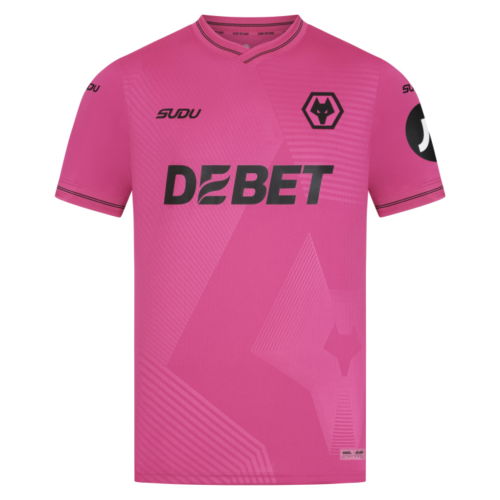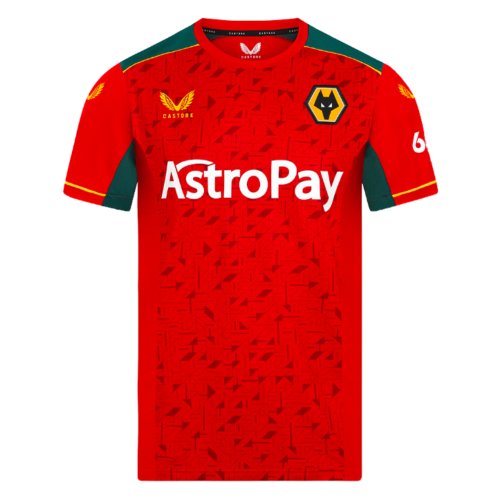The Story of Wolves’ Kits
Founded in 1877, Wolverhampton Wanderers are instantly recognisable in their gold and black colours. The shade — officially described as “Old Gold” — has been part of the club’s identity since the 1890s and represents courage, excellence, and the strength of the industrial Black Country.
Over time, Wolves’ home colours have become one of the most iconic combinations in world football — simple yet bold, evoking the same grit and energy that defines both the team and the city.
Kit Evolution and Brand Heritage
Wolves’ first kits were plain white, before switching to red and white stripes, and eventually settling on the famous gold and black in 1892. Early shirts were heavy wool, gradually replaced by lighter cotton as professionalism took hold.
From the 1950s onwards, Wolves became pioneers in kit design, often among the first to adopt continental-style shirts. Manufacturers such as Umbro, Le Coq Sportif, Adidas, Puma, and Castore have each interpreted the classic look in their own way — from the plain, collarless designs of the Stan Cullis era to modern geometric textures under Castore.
Away and third kits have historically varied: black, white, silver, blue, and even teal have all featured, often referencing club heritage or standout seasons.
Famous Wolves Shirts
-
1958/59 Home Shirt – worn by Wolves’ double-winning squad and during their famous European friendlies against Real Madrid and Honvéd.
-
1979/80 Home Shirt – associated with the League Cup-winning campaign, featuring the iconic Le Coq Sportif logo.
-
2003/04 Home Shirt – marking Wolves’ first Premier League season, a proud moment after years in the lower leagues.
2018/19 Home Shirt – the club’s return to the Premier League under Nuno Espírito Santo, with a striking minimalist gold design.
Little-Known Facts About Wolves Kits
-
The “Old Gold” origin: The club adopted gold to reflect the Wolverhampton coat of arms and its association with prosperity and strength.
-
European innovators: Wolves were among the first British clubs to wear floodlit kits for televised European friendlies in the 1950s — a forerunner to modern European competition.
-
Badge evolution: The famous wolf’s head crest was introduced in 1979; before then, shirts often featured a simple embroidered monogram or no badge at all.
-
Colour variations: Early “Old Gold” shirts were closer to orange due to dye limitations — modern synthetic fabrics now replicate the intended deeper tone.
-
Historic collars: Wolves experimented with black polo collars in the 1960s, setting a trend copied by other clubs in the decade that followed.
-
Minimal sponsors: For much of their modern era, Wolves have kept shirt sponsors understated, allowing the gold base to remain dominant.
Retro appeal: Classic 1970s and 1980s Wolves shirts are highly sought after among collectors for their clean design and iconic chevron-era styling.
Our Range and Personalisation Options
At UK Soccer Shop, you’ll find the complete Wolverhampton Wanderers range — official home, away, and third shirts, retro classics, and training wear. Every jersey is 100% authentic, featuring the official crest, sponsor, and manufacturer detailing.
Personalisation is available across most designs, allowing you to add your name or that of club legends such as Steve Bull, John Richards, or modern heroes like Rúben Neves and Pedro Neto.
Explore related collections to expand your English football lineup:
Why Wolves Shirts Stand Out
Wolves’ gold and black shirts are among football’s most striking and historic designs. They symbolise strength, unity, and endurance — qualities that have defined the club since its founding. Whether you’re collecting a vintage Le Coq Sportif classic or wearing the latest Premier League release, a Wolverhampton Wanderers shirt is a timeless emblem of English football heritage.















